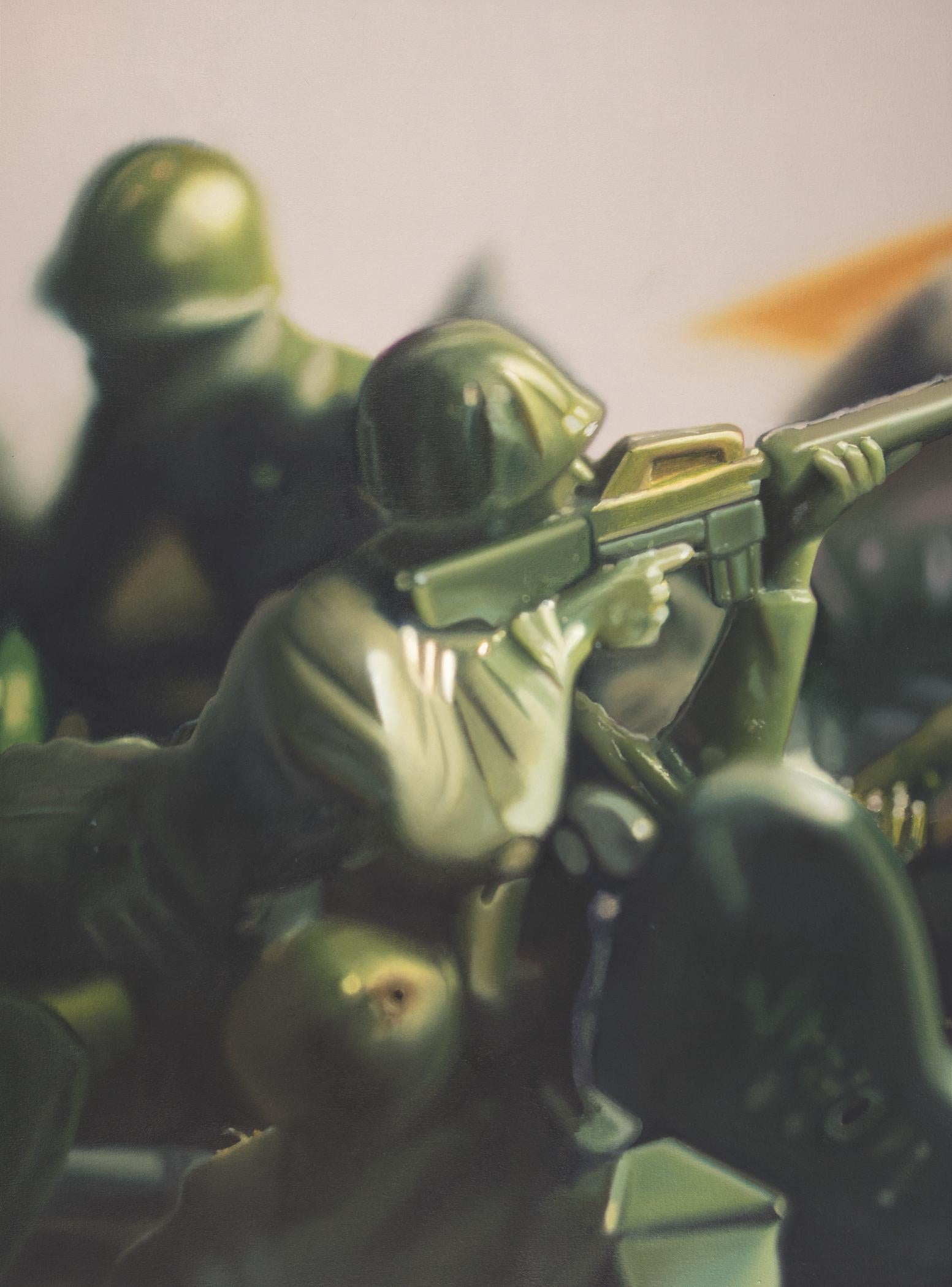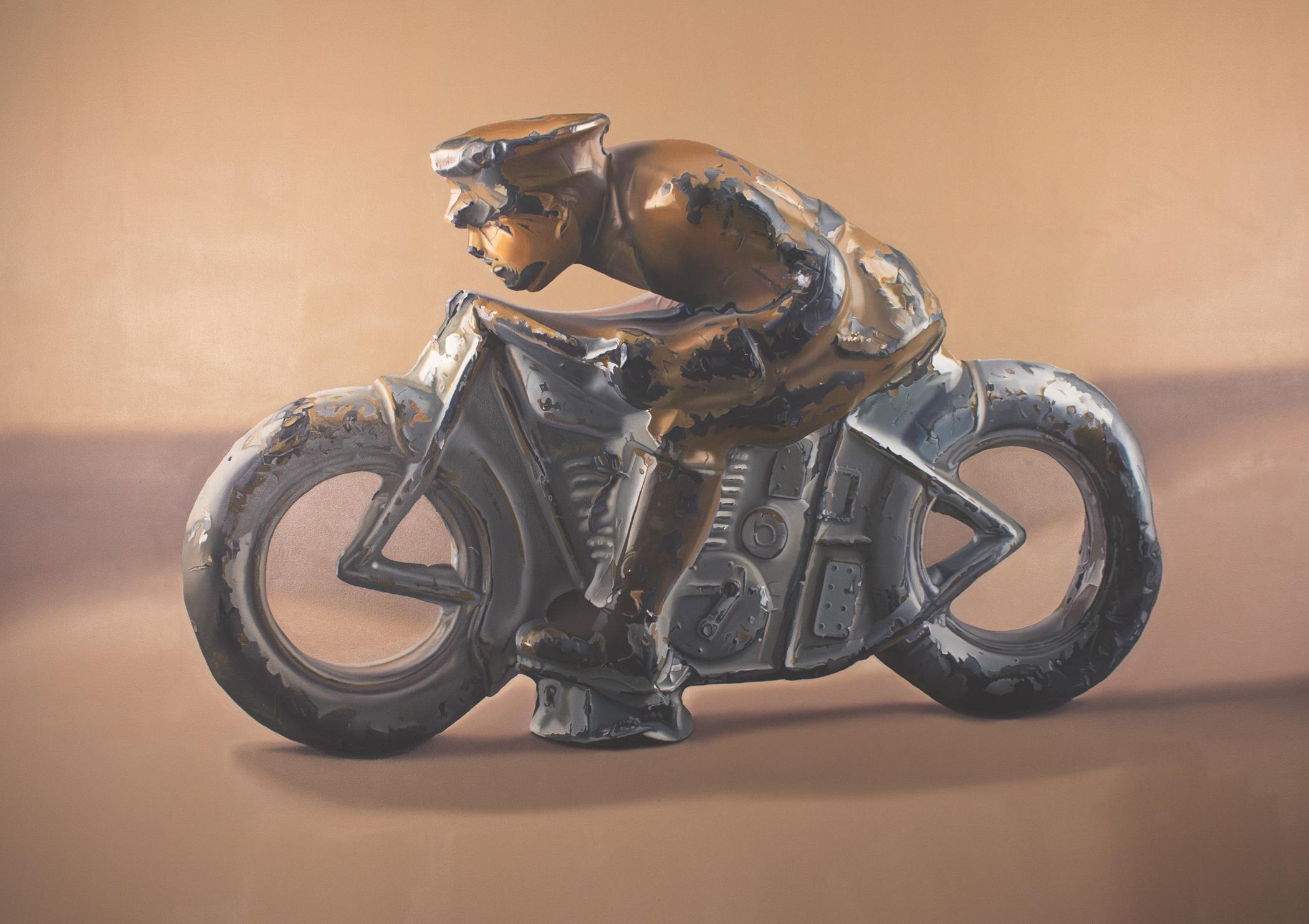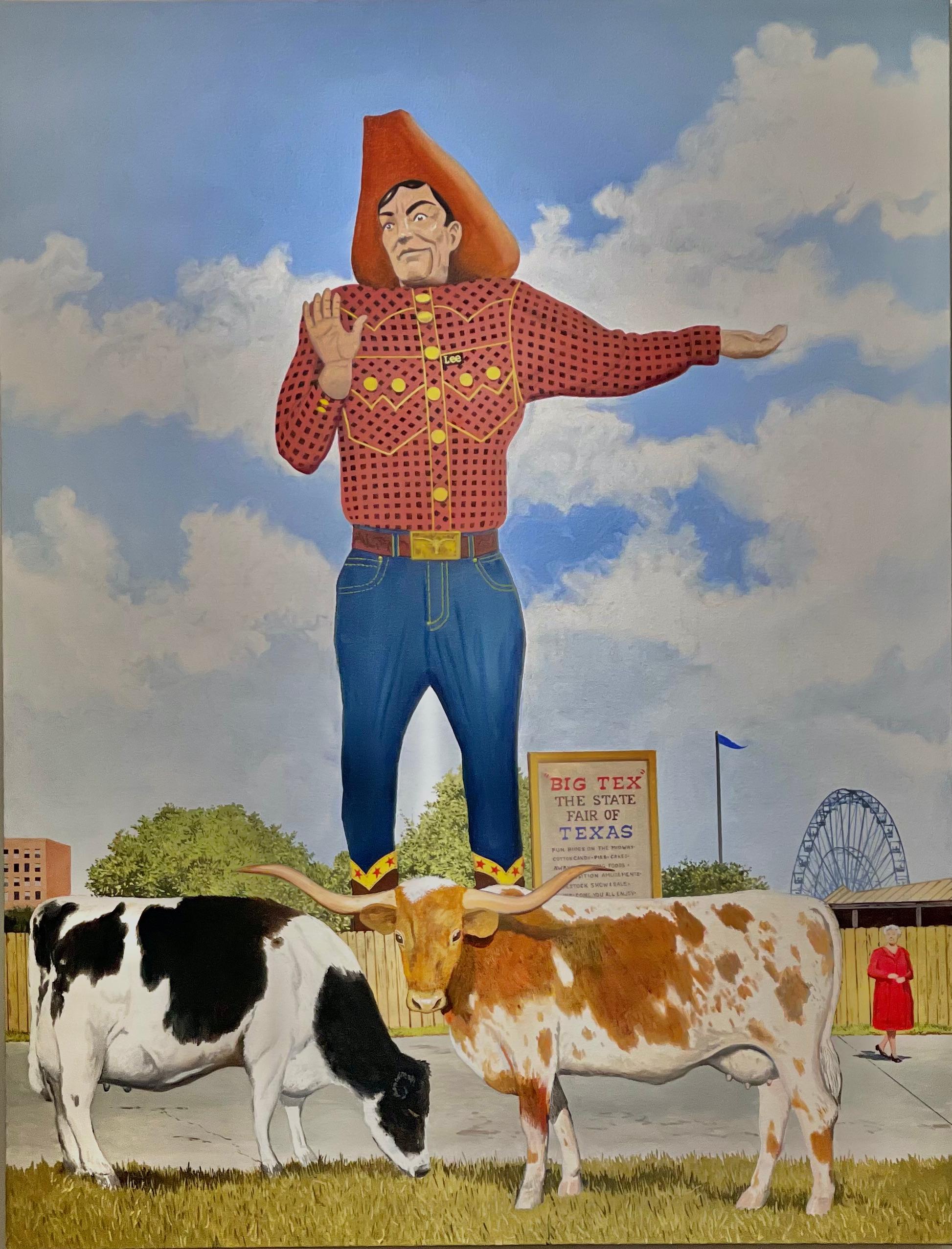Items Similar to Summer. "Hush"
Want more images or videos?
Request additional images or videos from the seller
1 of 12
Newell Convers WyethSummer. "Hush"1909
1909
About the Item
"Summer. "Hush"" is a painting by American artist N.C. Wyeth. It is an oil on canvas work and is signed lower right, “NC WYETH” and inscribed lower left, “Inscribed to Clara and Edwin on their wedding day Dec 25, 1913”.
Provenance:
Mr. and Mrs. Edwin R. Wyeth, 1913
Mrs. Edwin Wyeth, to 1988
(Judy Goffman Fine Art, New York, NY, May 1991)
Collection of John Edward Dell, to August 1995
Private collection, New York, to 2008
[Somerville Manning Gallery, Greenville, Deleware, April 2008]
Exhibition:
Philadelphia, PA, 1910, no. 798 on p. 51, as "Summer"
Chadds Ford, PA, 1972, no. 12; Greenville, DE, 1995
Greenville, DE, Somerville Manning Gallery, "N. C. Wyeth: Painter and Illustrator," June 14-Sept. 14, 2019
Literature:
Betsy James Wyeth, ed., The Wyeths, The Letters of N. C. Wyeth, 1901-1945 (Boston: Gambit, 1971), ps. 312, 313
Douglas Allen and Douglas Allen, Jr., N. C. Wyeth, The Collected Paintings, Illustrations and Murals (New York: Crown Publishers, 1972), p. 275, illustration in b/w p. 62
John Edward Dell, ed., Visions of Adventure, N. C. Wyeth and the Brandywine Artists (New York: Watson-Guptill Publications, 2000), illustration in color p. 64
Christine B. Podmaniczky, N. C. Wyeth, A Catalogue Raisonné of Paintings (London: Scala, 2008), I.284, p. 200
Emerging at the end of the Gilded Age, N.C. Wyeth was one of the most important American artists and illustrators. His paintings and illustrations brought life to classic literature from Treasure Island to The Boy’s King Arthur and more. He is most remembered for his ability to capture crucial moments in narratives, fleshing out just a few words into a visual representation of deep drama and tension. Patriarch of the Wyeth artistic dynasty which includes his son Andrew and grandson Jamie, his influence touched future illustrators and artists.
Perhaps his most important legacy is how he shaped American imagination – of America itself and of wild possibilities. Wyeth’s powerful paintings gave life to many of the stories America told of itself. His early paintings captured life of the American West and some of his most beloved illustrations were for novels such as The Last of the Mohicans or short stories like “Rip Van Winkle”. Despite this success, Wyeth struggled with the commercialism of illustrations and advertisements, seeking his work to be accepted as fine art. Throughout his career, he experimented with different styles shifting from Impressionism to Divisionism to Regionalism.
N.C. Wyeth produced over 3,000 paintings and illustrated 112 books. His illustrations for the publisher Charles Scribner’s Sons were so popular they became known as Scribner’s Classics and remain in print to this day.
This quietly powerful painting of a Native American forms part of a quartet of paintings, inspired by and a metaphor for the four seasons. The paintings were used to illustrate George T. Marsh’s set of poems “The Moods”. Wyeth recognized that the series came at a crucial moment in his career in which the paintings go beyond realism to capture atmosphere and mood, an internal world of emotion made external. He even contemplated and attempted to write his own poems based on these paintings.
Summer, Hush is a striking example of Wyeth pulling from his imagination and melding it with careful observation of nature. As noted in a letter to his mother, Wyeth combined the fictional subject with natural effects as in the sky. Native Americans were a subject he returned to numerous times; these paintings reflect not only Wyeth’s fascination but also of America. As observed by art historian Krstine Ronan, Wyeth was part of a larger dialogue that developed around Native Americans, cementing a general Native American culture in the imagination of the United States. Thus, the painting operates on numerous levels simultaneously. How do we relate to this painting and its conception of the four seasons? How do we interpret Wyeth’s depiction of a Native American? What role do Native American’s play in America’s imagination?
We must also not forget that these works were first used to illustrate the poems of George T. Marsh. Marsh, a poet born in New York that often also wrote of the Canadian wilderness, provides subtle evocations of the seasons hinted at in the series title “The Moods”. This painting was used alongside “Hush” which ends:
Are they runes of summers perished
That the fisher hears –and ceases—
Or the voice of one he cherished.
Within these few lines, Wyeth gives us a thoughtful and restrained painting that stirs from within. The poem and the painting avoid obvious clichés to represent the seasons. They develop a profound interpretation filled with sensitivity.
These paintings were important to Wyeth who hoped that “they may suggest to some architect the idea that such decorations would be appropriate in a library or capitol or some public building.” Summer, Hush demonstrates Wyeth’s control of color and composition so that small touches such as the ripples of water or the towering cloud that envelopes the figure are in service to sketch out the feeling of summer and of the poem. Through exploring this rich and complex painting we are better able to appreciate NC Wyeth as an artist and the role in which his work both in general and this specific painting plays in the context of art history.
- Creator:Newell Convers Wyeth (1882-1945, American)
- Creation Year:1909
- Dimensions:Height: 33.75 in (85.73 cm)Width: 30.25 in (76.84 cm)
- Medium:
- Movement & Style:
- Period:
- Condition:
- Gallery Location:Palm Desert, CA
- Reference Number:
About the Seller
4.8
Recognized Seller
These prestigious sellers are industry leaders and represent the highest echelon for item quality and design.
Established in 1996
1stDibs seller since 2011
101 sales on 1stDibs
Typical response time: 5 hours
- ShippingRetrieving quote...Ships From: Jackson, WY
- Return PolicyA return for this item may be initiated within 7 days of delivery.
More From This SellerView All
- ScoutingBy Frank Tenney JohnsonLocated in Palm Desert, CA"Scouting" is an oil on canvas painting by Frank Tenney Johnson. The framed piece measures 23 3/4 x 27 3/4 x 3 1/4 inches. Johnson was well-known for his work of the American west, particularly for his portrayal of cowboys at night, lit by moonlight. Johnson utilized knives and fingers when painting, so his work is recognizable for its distinctive marks. Provenance: Biltmore Galleries, Scottsdale...Category
Early 20th Century American Realist Landscape Paintings
MaterialsCanvas, Oil
- Puritan Cod FishersLocated in Palm Desert, CAA painting by father and son N.C. Wyeth and Andrew Wyeth. "Puritan Cod Fishers" is a 20th century painting from N.C. Wyeth's commission of murals for the Metropolitan Life Insurance...Category
20th Century American Realist Figurative Paintings
MaterialsCanvas, Oil
- The Young ArtistBy Grant WoodLocated in Palm Desert, CA"The Young Artist" is an oil on panel painting made in 1926 by Grant Wood. The work is signed lower right, "Grant Wood". The painting size is 11 x 14 x 1 inches. The framed size is 2...Category
Early 20th Century American Realist Landscape Paintings
MaterialsOil, Panel
- Navajo CampBy Gerard Curtis DelanoLocated in Palm Desert, CA"Navajo Camp" is an oil on panel painting by Gerard Curtis Delano. The painting is signed lower left "Delano". The framed piece measures 31 x 36 3/4 x 1 7/8 inches. Delano was a pai...Category
Early 20th Century American Realist Landscape Paintings
MaterialsOil, Panel
- State PowerBy Leonid LammLocated in Palm Desert, CAAn oil on canvas painting by contemporary artist Leonid Lamm. "State Power" is an abstracted work executed in greens, yellows and reds and depicts an abstracted, mask like face abov...Category
1980s Contemporary Figurative Paintings
MaterialsCanvas, Oil
- BimbamBy Carlos LunaLocated in Palm Desert, CAAn oil on canvas executed in saturated and bright reds, orange, black and white, Bimbam, by Latin American artist Carlos Luna, depicts the face of a man wearing a hat and looking out...Category
Early 2000s Contemporary Figurative Paintings
MaterialsCanvas, Oil
You May Also Like
- Contemporary Oil of Antique, Rustic Porcelain Christian/Catholic Virgin MaryLocated in Fort Worth, TXMother Mary, 2017 John Hartley discovered his life's passion while growing up in Piqua, Ohio. Encouraged to develop his talents in an academic environme...Category
2010s American Realist Still-life Paintings
MaterialsOil, Canvas, Acrylic
- Contemporary Quirky Portrait of Party People with Incredible Carpet DetailBy Nancy LambLocated in Fort Worth, TXThe Menthol Mood, 2009, Nancy Lamb, Oil on canvas, 48 x 85" Nancy Lamb (American, born 1956), sculptor and painter. Formally trained at Texas Christian Uni...Category
2010s American Realist Figurative Paintings
MaterialsCanvas, Acrylic, Oil
- Contemporary Green Army Men; Vintage/Antique Collectable Toy Soldiers in BattleLocated in Fort Worth, TXSightline, 2017 John Hartley discovered his life's passion while growing up in Piqua, Ohio. Encouraged to develop his talents in an academic environment...Category
2010s American Realist Still-life Paintings
MaterialsOil, Canvas, Acrylic
- Contemporary American Oil of an Antique/Vintage Collectable Toy RacerLocated in Fort Worth, TXLead Foot, 2017 John Hartley discovered his life's passion while growing up in Piqua, Ohio. Encouraged to develop his talents in an academic environment...Category
2010s American Realist Still-life Paintings
MaterialsOil, Canvas, Acrylic
- Large Contemporary Oil Portrait of Party People Smoking, Laughing, and DrinkingBy Nancy LambLocated in Fort Worth, TXThe Menthol Mood, 2009, Nancy Lamb, Oil on canvas, 48 x 85" Nancy Lamb (American, born 1956), sculptor and painter. Formally trained at Texas Christian Un...Category
2010s American Realist Figurative Paintings
MaterialsCanvas, Acrylic, Oil
- Contemporary American Oil Painting with Big Tex, Cowboy, and Texas State FairLocated in Fort Worth, TX'Loose Cows,' 2021 by Daniel Blagg. Oil on canvas. 55 x 42." $19,000. Contemporary American Oil Painting with Big Tex, Cowboy, and Texas State Fair. Nothing s...Category
21st Century and Contemporary American Realist Figurative Paintings
MaterialsCanvas, Paint, Oil





